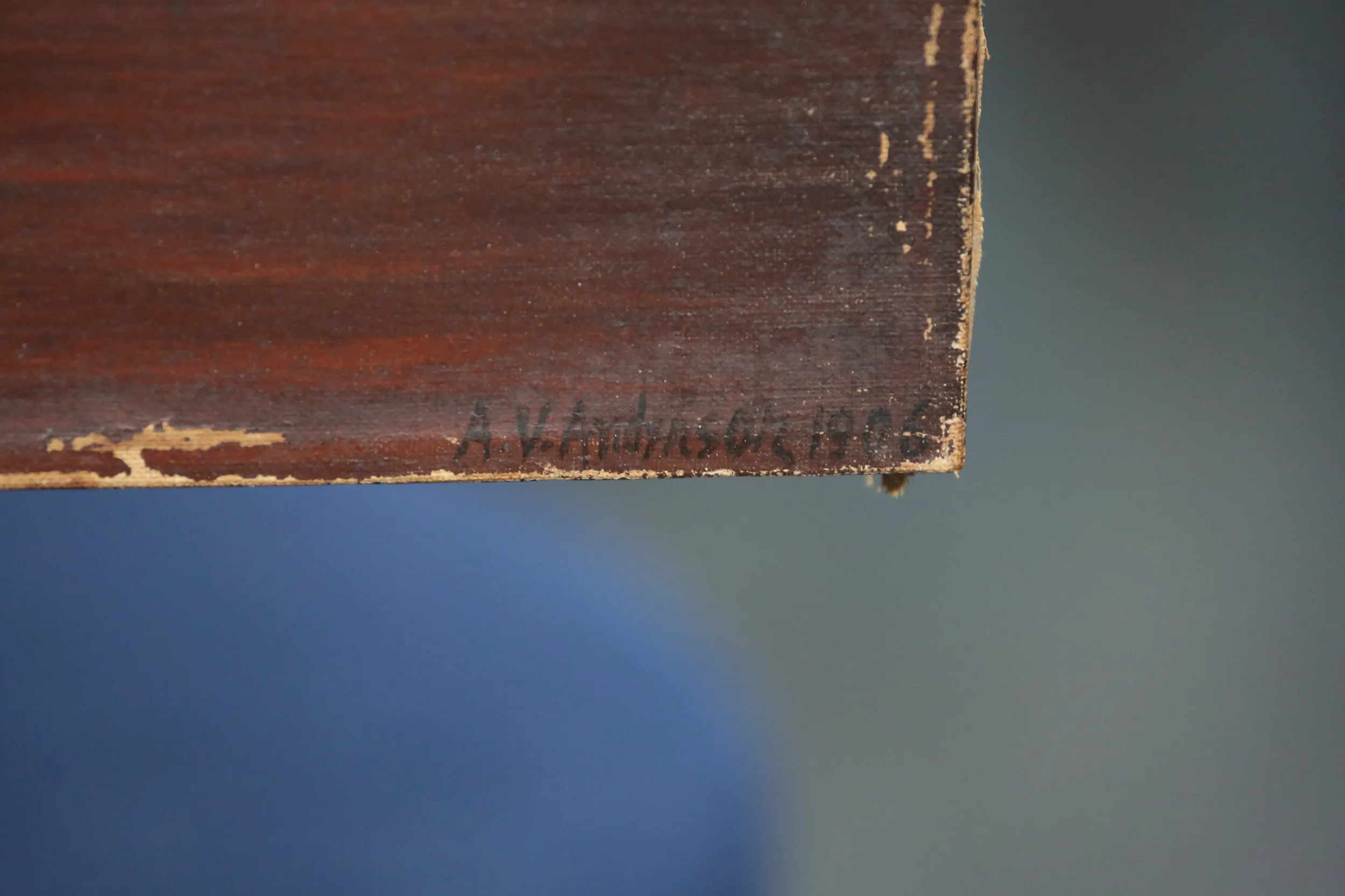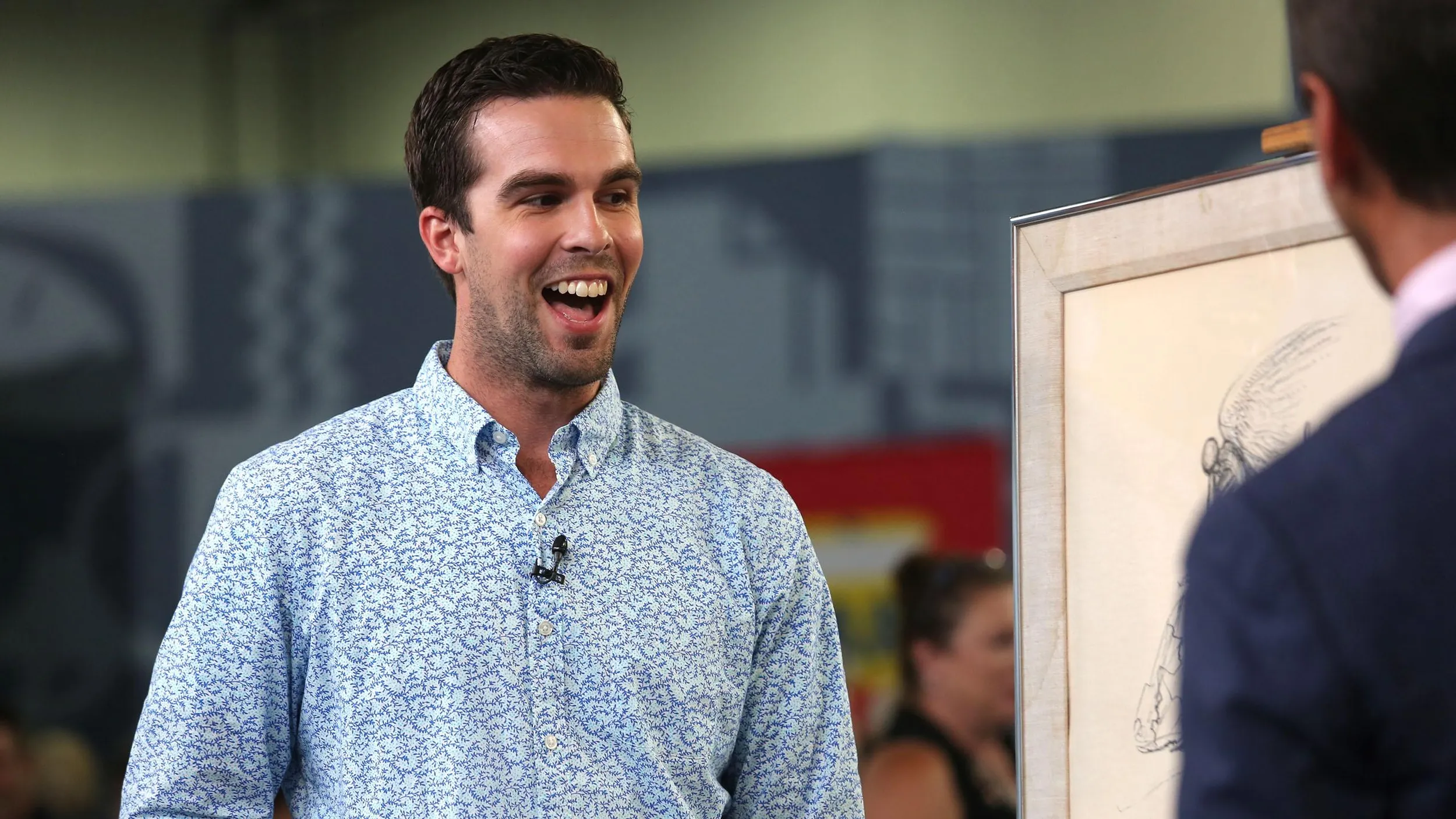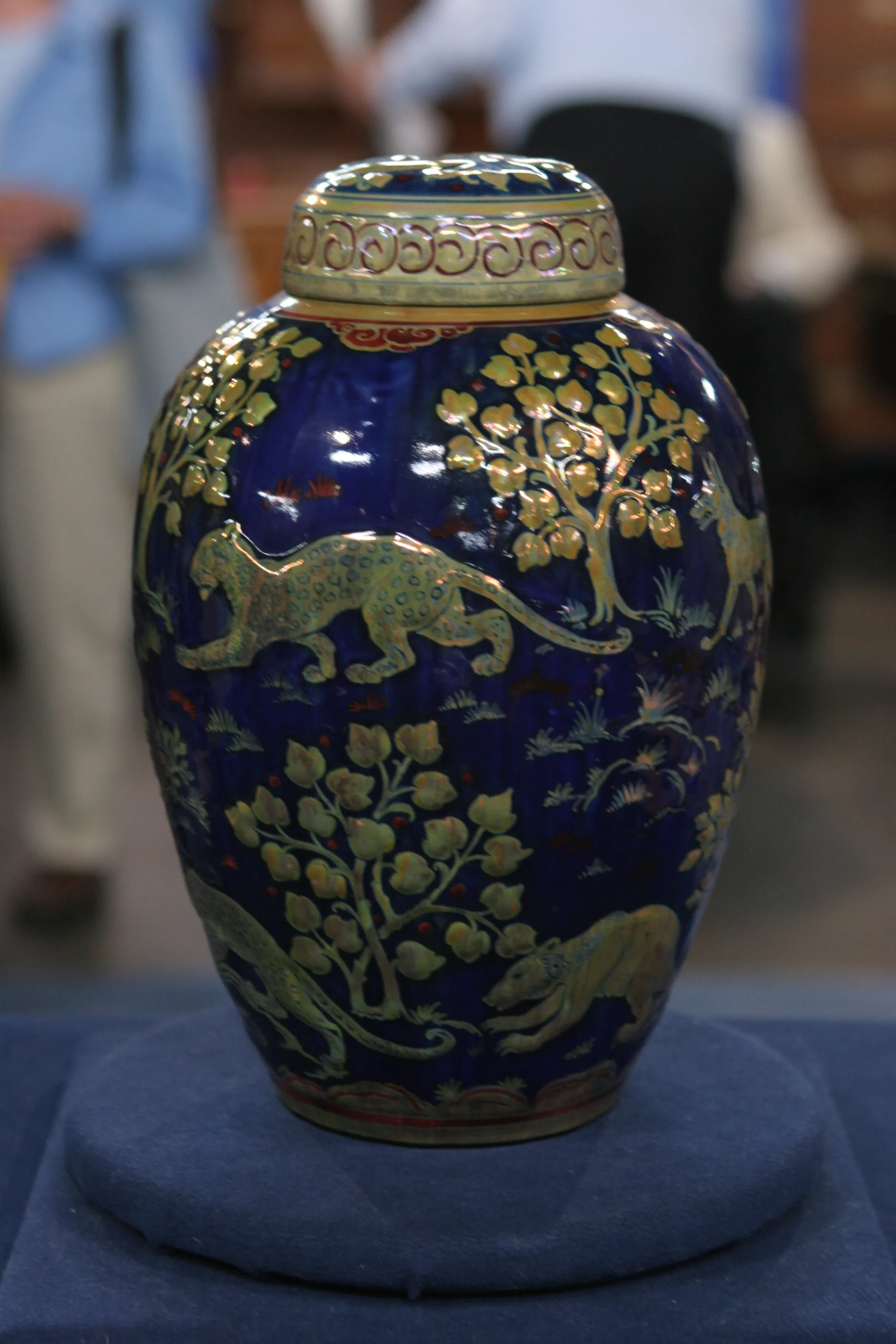1906 Arvid Anderson San Francisco Earthquake Oil
APPRAISER: Well, today, you brought me a painting that looks like it's been through an earthquake.
GUEST: It... yeah. It's had better days.
APPRAISER: Yeah. What do we have here? A painting that's oil on canvas, and what's it of?
GUEST: It's the fire after the San Francisco earthquake. We checked with a friend who's a sailor who said the only person who's seen it of importance-- who said that the running lights for the ship are actually accurate. So, I figured whoever did this from Angel Island in the bay was there and either drew or painted or took notes, so that they would be absolutely accurate historically.
APPRAISER: Where'd you get it?
GUEST: My husband-- his father bought a really gorgeous old Victorian in San Mateo, California, that had been run down and turned into a boarding house. And his dad said, "If you'll come help me clean the attic, you can have anything you find that you want." And he wanted a chest of drawers that was over against the wall. But he pulled the chest of drawers out, and this fell out from behind it, and Greg said, "I'll take this." So, we've had it ever since. That was 1969... '68 or '69. At one point, we tried looking it up at the library, and there are so many... it's apparently an Anderson. There are a lot of Andersons. So we just... we gave up. We've kept it as a sentimental treasure.
APPRAISER: As you mentioned, the earthquake, having lived there, it's one of the things we mention about San Francisco, they call a fire an earthquake. (laughs) Most of the damage that was done was done by the fire.
GUEST: Right.
APPRAISER: Following the earthquake in 1906, we see this here raging throughout the city several days afterwards. In fact, what was interesting after the fire, there was an impetus to do the Hetch Hetchy Dam, the reservoir, because they said, "If we had the water, we could've st... stalled the fire." And there was actually... much more damage was done trying to stop the fire by building fire breaks with dynamiting buildings, and that only exacerbated the situation.
GUEST: Right.
APPRAISER: So it's really important to have this document here. As you've said, it's very accurate. You mentioned Angel Island, I'm curious why you thought it was Angel.
GUEST: The perspective, because Treasure Island hadn't been built yet. And the only place we could figure that you would get this view of the Ferry Building would be from Angel Island.
APPRAISER: Well, actually, Angel Island would be out around here.
GUEST: Oh, really?
APPRAISER: A little bit, yeah. What you're actually looking at is from Yerba Buena Island or a ship off of Yerba Buena Island. Treasure Island is a flat spot that was built for the 1937 fair, or '39 Golden Gate Fair, built in '37.
GUEST: Right. Right.
APPRAISER: And that's a flat area off of Yerba Buena Island, which is where the Bay Bridge goes through. So it's probably from there, because this is the Ferry Building. The iconic Ferry Building.
GUEST: Right. Yes, yeah.
APPRAISER: And you're looking straight onto it, and then the hill, and this would be over toward Telegraph Hill over here. You mentioned the running lights. Here, you have the port and starboard running lights here for the ships, the little greens, and they're almost not seen, the little green and red spots, just the subtlety and accuracy of the piece. As you said, it is Anderson, it's signed "AV Anderson" and then dated 1906. And there is an artist by the name of Arvid Victor Anderson, who was in San Francisco. He was a Swedish person who comes there in 1888.
GUEST: Whoa! Whoa! That's just cool!
APPRAISER: Yeah, and actually painted this. The piece itself, is, as I said, has been through an earthquake, or it seems like it.
GUEST: Oh, yeah.
APPRAISER: Obviously, you see the frame abrasions up here and down here where the frame is beat up. On the back, there's a label for the framer, stating it's from San Francisco as well. And there's mold up here, even. These little spots are mold spots. So this can be cleaned up, and it would brighten up a bit.
GUEST: By the way, the dog who did that lived. (laughing) It was a very close call.
APPRAISER: These are fang marks?
GUEST: They are, and it was a very close call.
APPRAISER: The artist himself, his paintings normally sell for a few hundred dollars.
GUEST: I've never thought-- yeah.
APPRAISER: Arvid Anderson, a couple that have come up at auction.
GUEST: Right.
APPRAISER: I would think a value-- an auction estimate or fair market value in that range would probably be around $5,000 to $7,000, because it's that important of an object.
GUEST: Whoa. I... we never... no. I... (laughs) I never expected to be here. I thought we'd come in and somebody would say, "It's historically pretty, it's $500 or $600." That's... I think they'll pay attention. (laughing) I think they'll...
APPRAISER: Well, you just don't get these every day.
GUEST: No. Whoa. I'm a happy camper. I am a very happy camper.

$5,000 - $7,000 Auction
Photos

Featured In

episode
Portland, Hour 2
Rose Bowl trophy, Evel Knievel leathers, and a Ming Dynasty bow. Which is up to $100,000?
Fine Art
Understanding Our Appraisals
Placeholder









